Madame du Châtelet at her Desk by Maurice Quentin de La Tour
The Philosopher and the Prodigy
by Michelle Legro
“That lady whom I look upon as a great man… She understands Newton, she despises superstition and in short she makes me happy.”
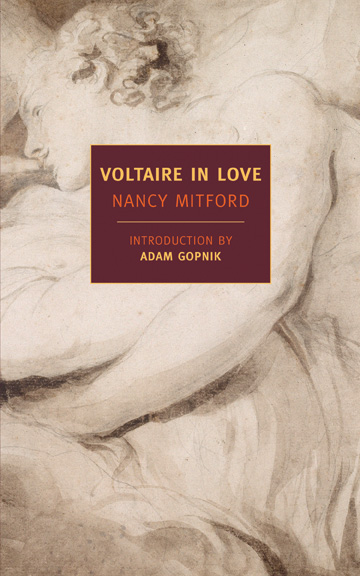 “I found, in 1733, a young woman who thought as I did, and who decided to spend several years in the country, cultivating her mind.” So begins the description by Voltaire in his memoirs of a relationship that would define the most productive years of his life. The most famous man in Europe had met his match: the twenty-seven-year-old mathematical prodigy Émilie, Marquise du Châtelet.
“I found, in 1733, a young woman who thought as I did, and who decided to spend several years in the country, cultivating her mind.” So begins the description by Voltaire in his memoirs of a relationship that would define the most productive years of his life. The most famous man in Europe had met his match: the twenty-seven-year-old mathematical prodigy Émilie, Marquise du Châtelet.
The pairing was dynamic and productive — together, they would achieve some of the most important Enlightenment writing on science, physics, and philosophy. But as Nancy Mitfordexplains in her fantastic 1957 biography of the intellectual power couple, Voltaire in Love(public library), they were devoted not just as intellectuals, but as lovers as well as friends. It was an extraordinary bond that lasted for nearly fifteen years.
In his youth, Voltaire enjoyed the education of a minor aristocrat; Émilie could credit her education solely to her father, who recognized her capacity for learning at an early age. She studied Latin, English, Italian, and Greek, translated the Aeneid, read Homer and Cicero, and, most importantly, excelled at math.
She was less successful at the feminine arts, and at the height of her fame would be chastised for having poor teeth, unkempt hair, and messy clothes. Mitford writes:
Elegance, for women, demands undivided attention; Émilie was an intellectual, she had not endless hours to waste with hairdressers and dressmakers.
Émilie and her talents inspired both awe and jealousy among the nobility; she had removed the most charming and witty man in Paris from their dinner tables. While Voltaire remained a bachelor, Émilie had married at nineteen the dull and abiding Marquis du Châtelet, the perfect arrangement for one to conduct a necessary love affair. Mitford explains:
Love, in France, is treated with formality; friends and relations are left in no doubt as to its beginning and its end. Concealment, necessitating confidants and secret meeting places, is only resorted to when there is a jealous husband or wife. The Marquis de Châtelet always behaved perfectly.
Before they met, both Voltaire and Émilie had a parade of lovers: He enjoyed the attentions, though not the intellect, of wealthy aristocrats who would feed and house him, while she entered into passionate affairs and even once drank poison to discourage a lover from leaving. After her third pregnancy at twenty-seven, she renounced the bearing of children and began the serious study of mathematics.
Their meeting was simple: The pair was introduced by another set of aristocratic lovers over a tavern dinner of chicken fricassee. Voltaire had just returned from England and was thrilled to discuss the latest scientific discoveries of the age. He wrote in a letter:
That lady whom I look upon as a great man… She understands Newton, she despises superstition and in short she makes me happy.
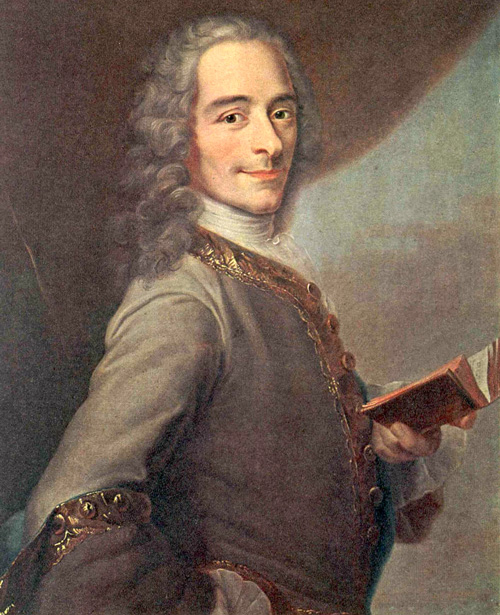
Portrait of Voltaire by Maurice Quentin de la Tour c. 1736, three years into his relationship with the Marquise du Châtelet. (Wikimedia commons)
She invited him to her house in the country. He moved in. (The Marquis was often away on military campaigns.) With the essential assistance of Émilie, Voltaire would publish Elémens de la philosophie de Newton in 1738, a simplified guide to the famous scientist, which popularized his most advanced theories, including the gravity of planets, the proof of atoms, the refraction of light, and the uses of telescopes. Voltaire sincerely recognized the intellectual debt he owed his lover. The frontispiece of the work shows the philosopher touched by the divine light light of Newton, reflected down to earth by a heavenly muse, Madame du Châtelet.
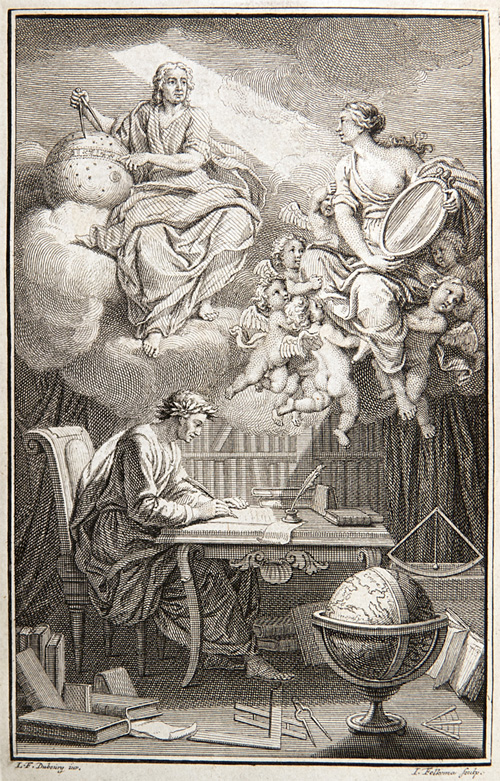
Frontispiece for Voltaire’s Elémens de la philosophie de Newton (1738). Newton and the Marquise as muse are shown floating above the author.
Émilie herself sought a more profound goal: the translation into French of Newton’s Mathematica Principia, in which the elements of calculus were first laid out. She not only translated, but also added her own commentary on Newton’s calculations. Her mathematical skills awed her social set. Émilie was a hustler of sorts at the gaming tables in Paris, though she rarely had the luck to win. Mitford writes:
Voltaire said of her that the people she gambled with had no idea she was so learned, though sometimes they were astonished by the speed and accuracy with which she added up the score. He himself once saw her divide nine figures by nine others in her head.
Voltaire and Émilie lived in an intellectual fairyland, punctuated by the occasional need for Voltaire to flee to the country due to an insult or an affront. But as with all French affairs, there was no doubt to the beginning of the love between Voltaire and Émilie, and there was no doubt to its end. In 1744, the Marquis de Saint-Lambert, a poet in the Academie Française and a Byronic figure at court, paid a visit to their country house. Ten years younger than the forty-three-year-old Émilie, Saint-Lambert began a cold seduction of the Marquise, who quickly fell in love. Voltaire, who had been recently ill, was enraged and depressed.
I am here in a beautiful palace… with all of my historical books and my references and with Mme du Châtelet; even so I am one of the most unhappy thinking creatures upon earth.
But in the manner of French love affairs, Voltaire decided that it was better to remain friends with the muse of his life. Instead of challenging the young Saint-Lambert to a duel, he let Émilie go:
No, no, my child, I was in the wrong. You are still in the happy age when one can love and be loved. Make the most of it. An old, ill man like myself can no longer hope for these pleasures.
With Saint-Lambert, Émilie soon found herself pregnant and terrified at the age of forty-four. She threw her attentions on translating Newton from Latin into French. She worked from eight in the morning until coffee at three in the afternoon, then she continued four until ten, and after a few hours with Voltaire, until five in the morning. With her work finished, she died in childbirth surrounded by her husband, her new lover, and Voltaire. (“It is you who has killed me!” he shouted at Saint-Lambert, learning of her death.) Voltaire would help publish her translation of Newton ten years after her death, which remains the standard version of the text in France today.
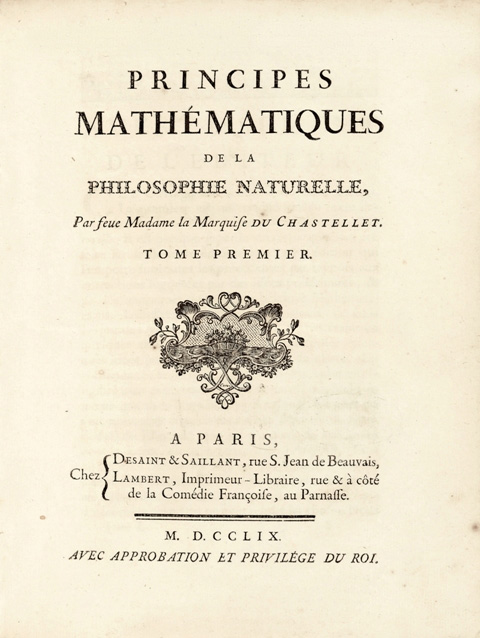
Issac Newton’s Principia, translated into French by the Marquise du Châtelet, published in 1759, ten years after her death.
Voltaire and Émilie du Châtelet were among the most inspirational couplings of the Enlightenment, and became a model for brilliant and difficult men and women who would come together in a blaze of all-consuming affection between like minds, including Virginia Woolf and Vita Sackville-West, George Eliot and George Henry Lewes, and Georgia O’Keefe and Alfred Stieglitz. Savor their singular romance in the altogether wonderful Voltaire in Love.
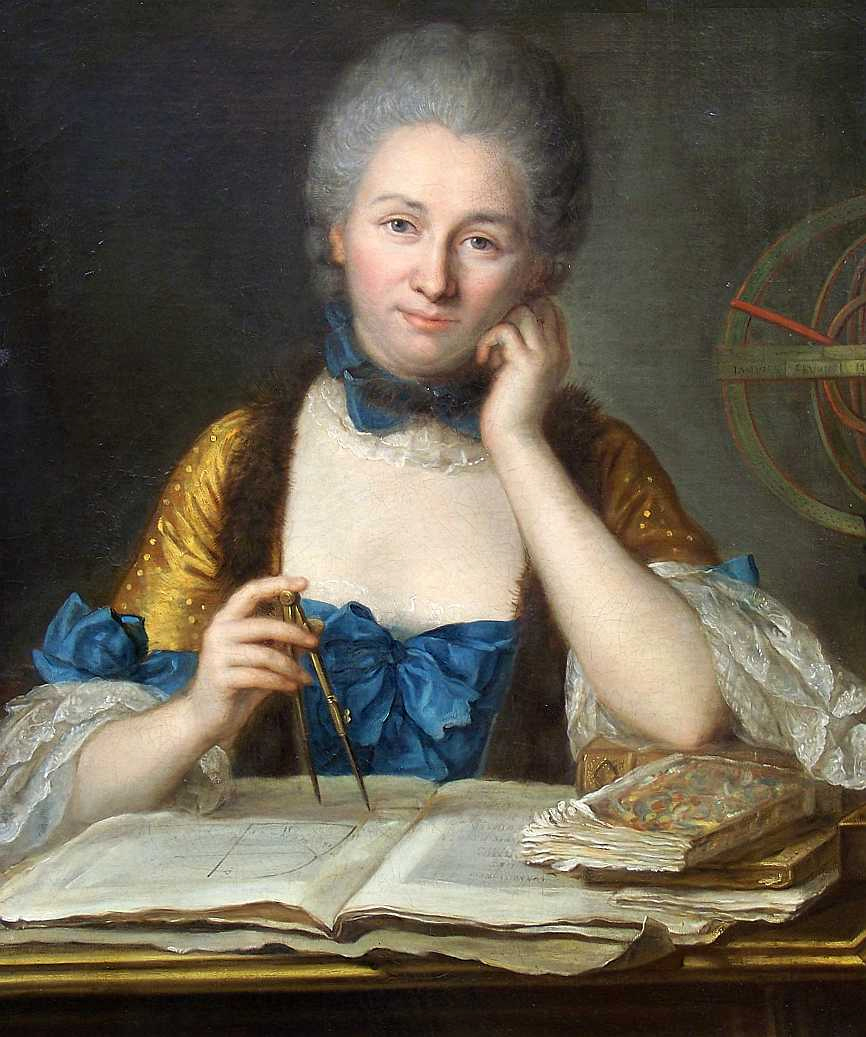
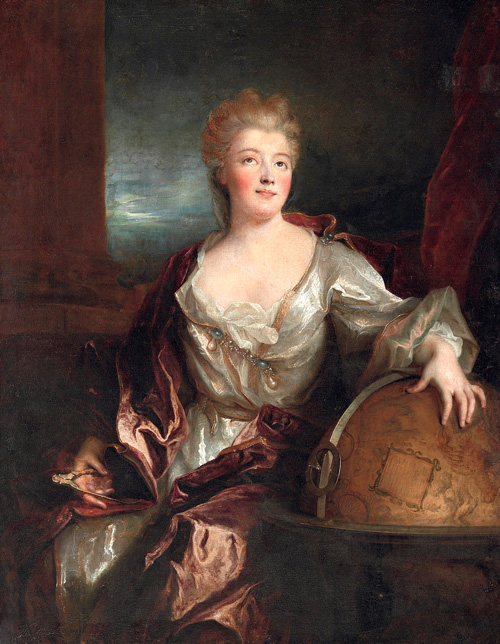
 Michelle Legro is an associate editor at
Michelle Legro is an associate editor at
No comments:
Post a Comment